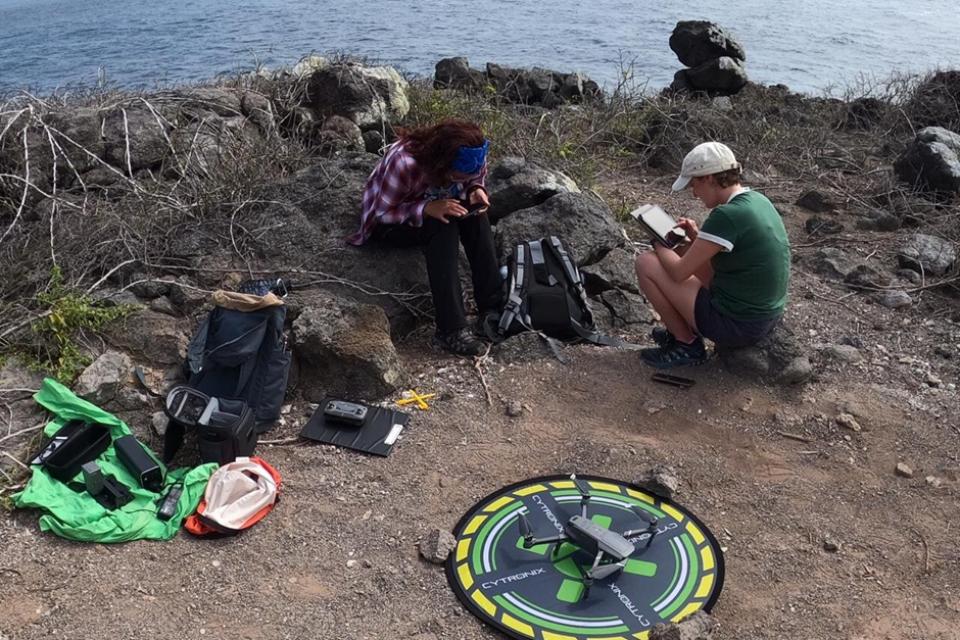
Project Update: Iguanas From Above
With Citizen Science Month well underway, our volunteer Sam Ross explains how you can get involved with the latest citizen science project running in Galapagos, Iguanas from Above.
Citizen Science Month, held every April, celebrates the ongoing contributions of citizen science to the scientific community and beyond. This year there are over 100 events planned, each designed to showcase a diverse array of global citizen science projects. In light of this, volunteer Sam Ross had a look at citizen science projects in Galapagos and how to get involved.
What is ‘Citizen Science’?
At its most simple, citizen science refers to public participation in various stages of scientific research. It allows researchers to collect and analyse data in less time and at a lower cost than might otherwise be possible. By engaging the public in this way, scientists can also increase public awareness of their research. Importantly, the benefits of citizen science extend beyond scientists. Those who take part can improve their scientific understanding and become key players in addressing important issues. These benefits are particularly pertinent to the area of wildlife conservation, where public support is needed more than ever to combat ever-increasing human threats. Recognising this, an exciting project in Galapagos has found a unique way to incorporate citizen science into its research.
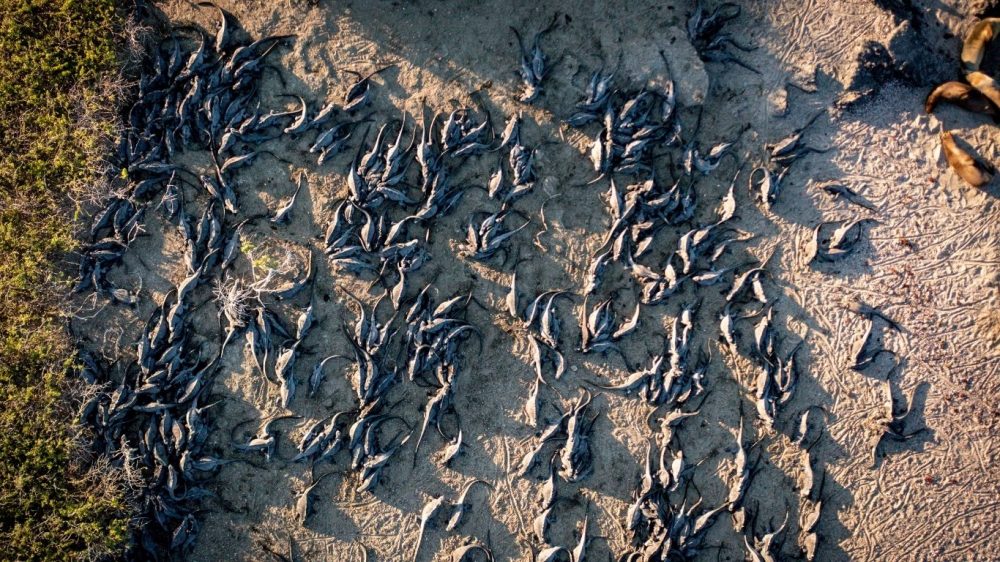
A drone image sample captured at Cabo Douglas, Fernanda © Amy MacLeod
Iguanas From Above: A Project Summary
The Iguanas from Above project focuses on collecting data about the population status of marine iguanas across the Galapagos Archipelago, with the primary aim of creating an effective conservation programme for these endangered endemic species. As part of the project, Amy MacLeod and her team of experts have captured drone footage from the rugged coastlines of Galapagos, where marine iguanas are typically found. Individual photos are then taken from this footage and uploaded to Zooniverse.com, a web portal for citizen science. Here, public volunteers can join scientists in analysing the photos for the presence of marine iguanas, other animals, and plastic pollution. This unique approach to research is quick, non-invasive, and incredibly accessible. Anyone with a phone or laptop and an internet connection can take part. With this in mind, I recently took part in it myself and joined a community of over 6,000 other volunteers!
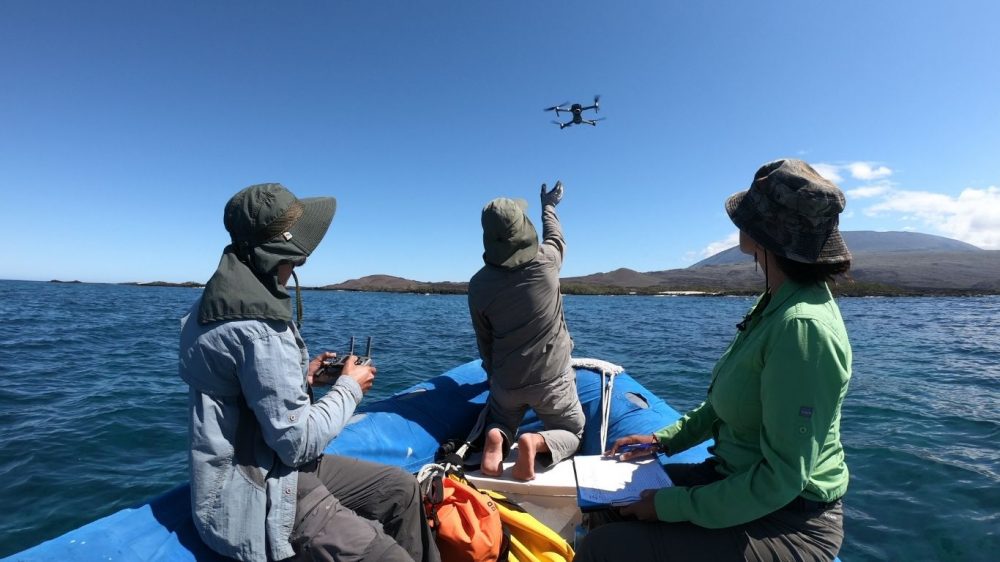
Drone footage enables our team to collect quick, non-invasive snapshots of marine iguanas © Andrea Varela
How to Get Involved
Getting involved in the project is very straightforward. You simply head to the ‘Iguanas from Above’ page on Zooniverse, click on the ‘classify’ tab and, after a quick tutorial, you’re ready to go! Don’t worry if you struggle at first. You can easily refer back to this tutorial at any time if you need to review anything – I had to do this a few times to really learn the distinction between the marine iguana genders and ages. After a short while, the whole process becomes second-nature.
Each picture presents a unique scene and there’s certainly something exciting about the fact that you might be the first person to have ever seen the image in front of you. In just half an hour, I spotted sea lions, crabs, various birds, and, of course, lots of marine iguanas! In some cases, the pictures were a bit more challenging to analyse, but it’s all the more rewarding when you finally spot an iguana carefully camouflaged amongst the rocks. For those with an active interest in the Galapagos Islands, the project is also a great educational tool. To this end, it’s definitely worth using the public chat function. This lets you discuss specific images, or more general queries, with the scientists and experts behind the project.
Ultimately, by taking part in this fun and simple activity, you can become closely connected to Galapagos and the conservation of its species. It’s the perfect opportunity to take part in meaningful conservation from your own home. With just over 50% of photos analysed, there’s plenty of time to join in and get involved in the second phase – every click counts!
Join the Iguanas from Above project on Zooniverse.
Why not have a look at our other citizen science projects?
How you can help
Please help us to protect the marine iguanas of Galapagos by donating today, joining up as a GCT member or sign up to our monthly eNewsletter.
Related articles
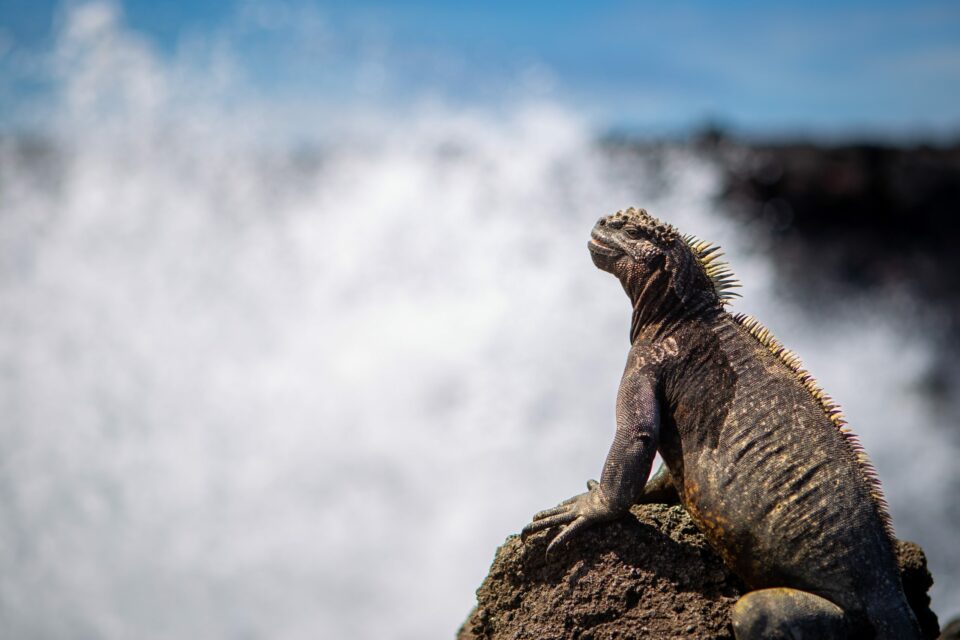
Iguanas from Above: Citizen science in action
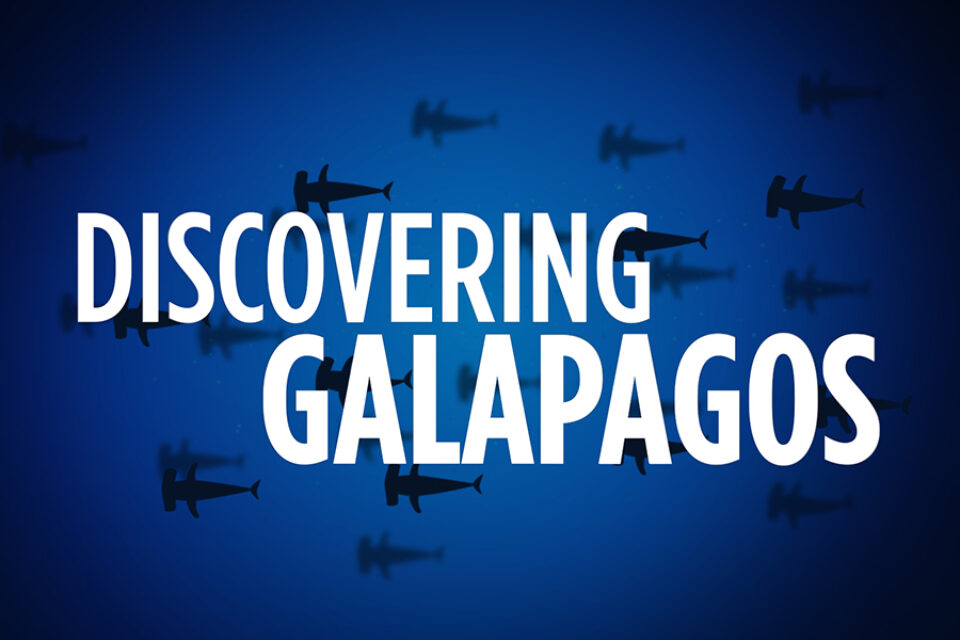
British Science Week 2022
